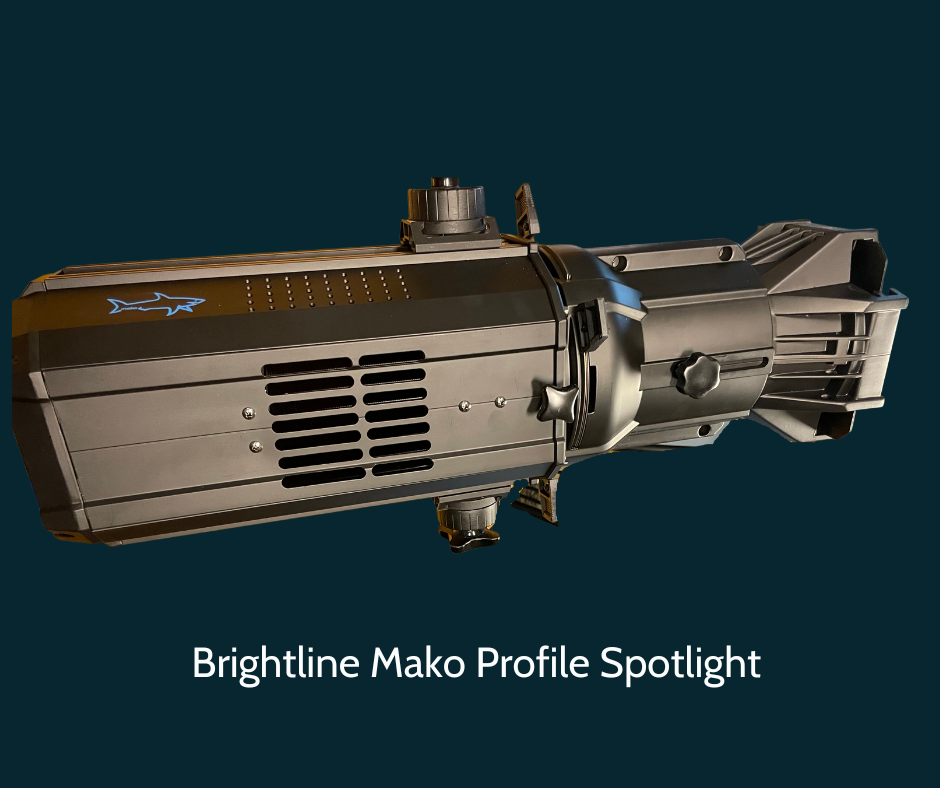
BRIDGEVILLE, Penn.—Brightline has introduced a new Mako and Minnow LED spotlight series for applications in broadcast and production studios as well as mid-sized and large presentation rooms.
The profile spotlight LEDs offer noise-free, fanless conduction cooling and are available in a tunable Variable White and RGBW (Red, Green, Blue and White) versions.
The Mako spotlight uses interchangeable prime lenses and is designed for longer throws within large rooms or studios. The Minnow covers a shorter throw and is well-suited for key and accent light applications. Minnows have a compact zoom lens, enabling precise and continual adjustment to create the desired beam size, the company said.
“This new family of fixtures provides lighting designers with a new tool set that fits hand in glove with the rest of our product line,” said Kathy Katz, co-founder of Brightline. “The Mako and Minnow can be used as variable white spots, as well as color changing effects.”
Both fixtures are conduction cooled. With conduction cooling, heat is transferred from the COB (Chip On Board) LED to the heat sink and then to the mass of the fixture, it said.
“We build all of our product lines around fanless designs,” said Katz. “When a fixture has no moving parts, its continual use is extended dramatically, which is the case with many of our studio fixtures that continue to operate after 20-plus years of daily use.”
The Mako and Minnow series feature a variable white LED (3200K-6000K) and 95+ CRI tunable white chip. Tunable white applications provide independent color temperature control. The Mako and Minnow RGBW models provide full color spectrum performance and feature a 4-in-1 LED RGBW for the brightest output and the boldest color rendering, it said.
The professional video industry's #1 source for news, trends and product and tech information. Sign up below.
Both lights are available for immediate shipping.
More information is available on the company’s website.
Phil Kurz is a contributing editor to TV Tech. He has written about TV and video technology for more than 30 years and served as editor of three leading industry magazines. He earned a Bachelor of Journalism and a Master’s Degree in Journalism from the University of Missouri-Columbia School of Journalism.

